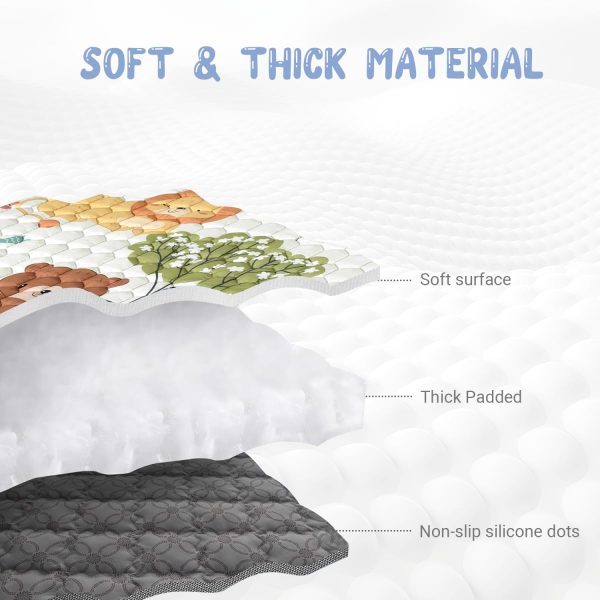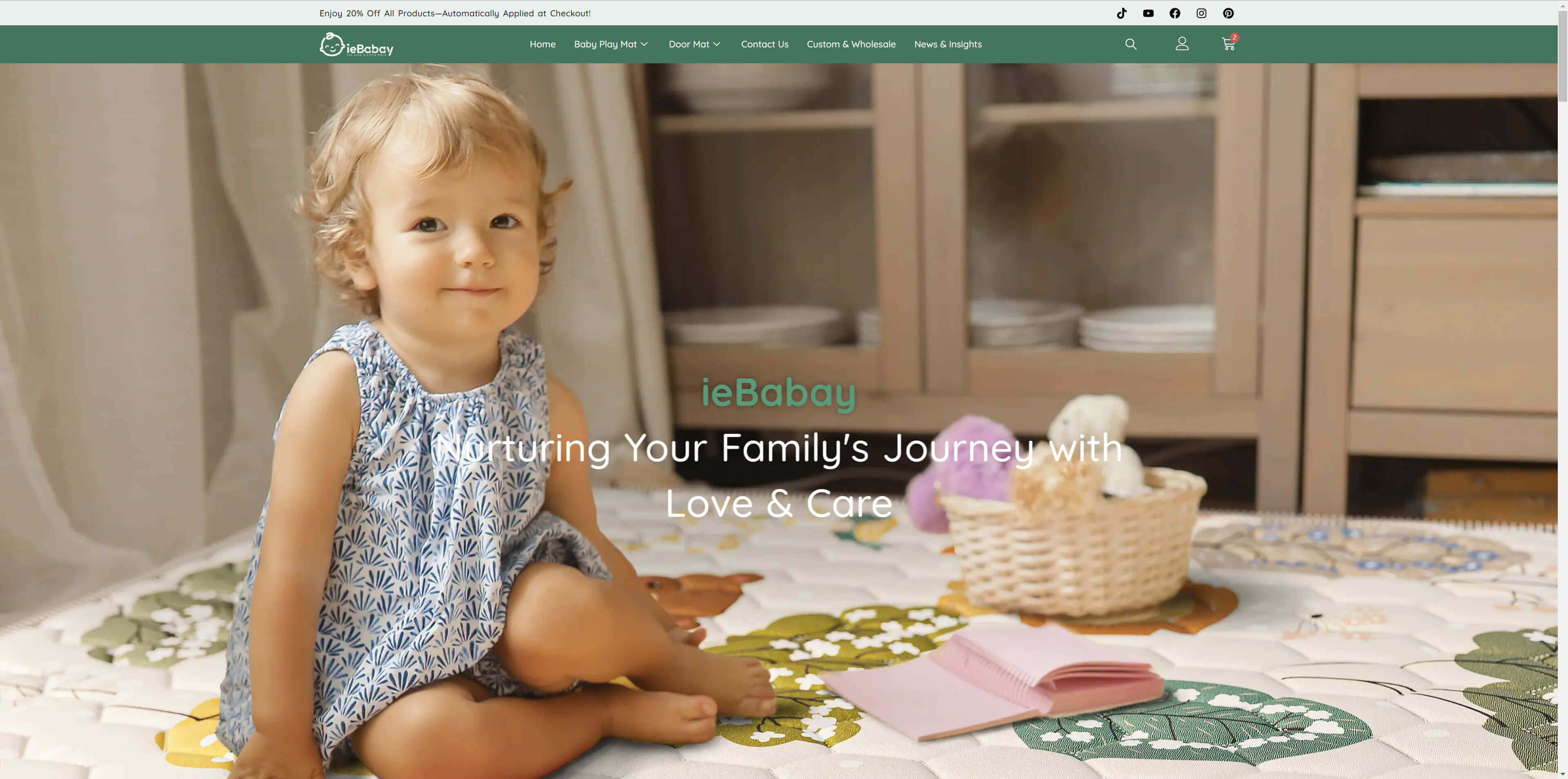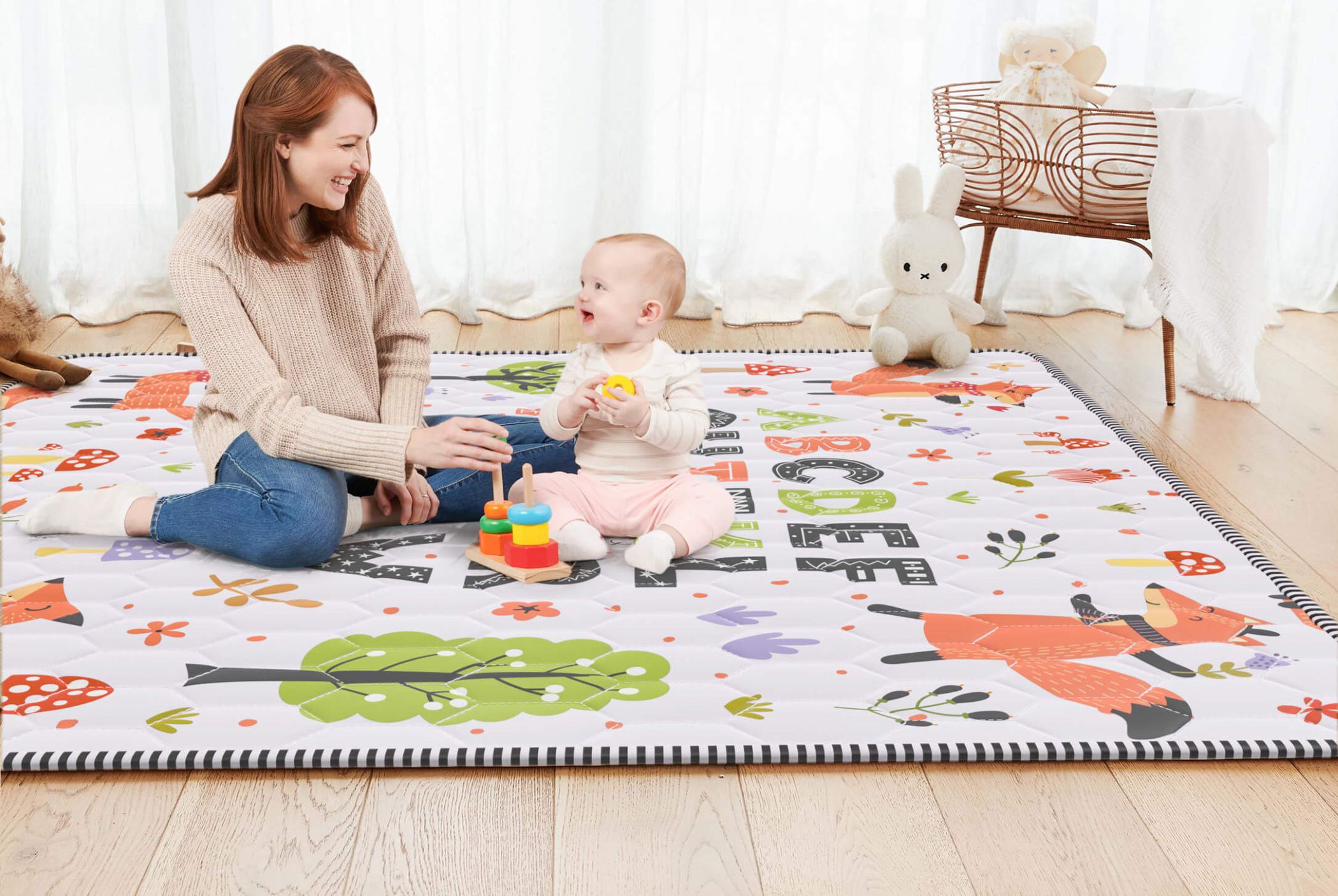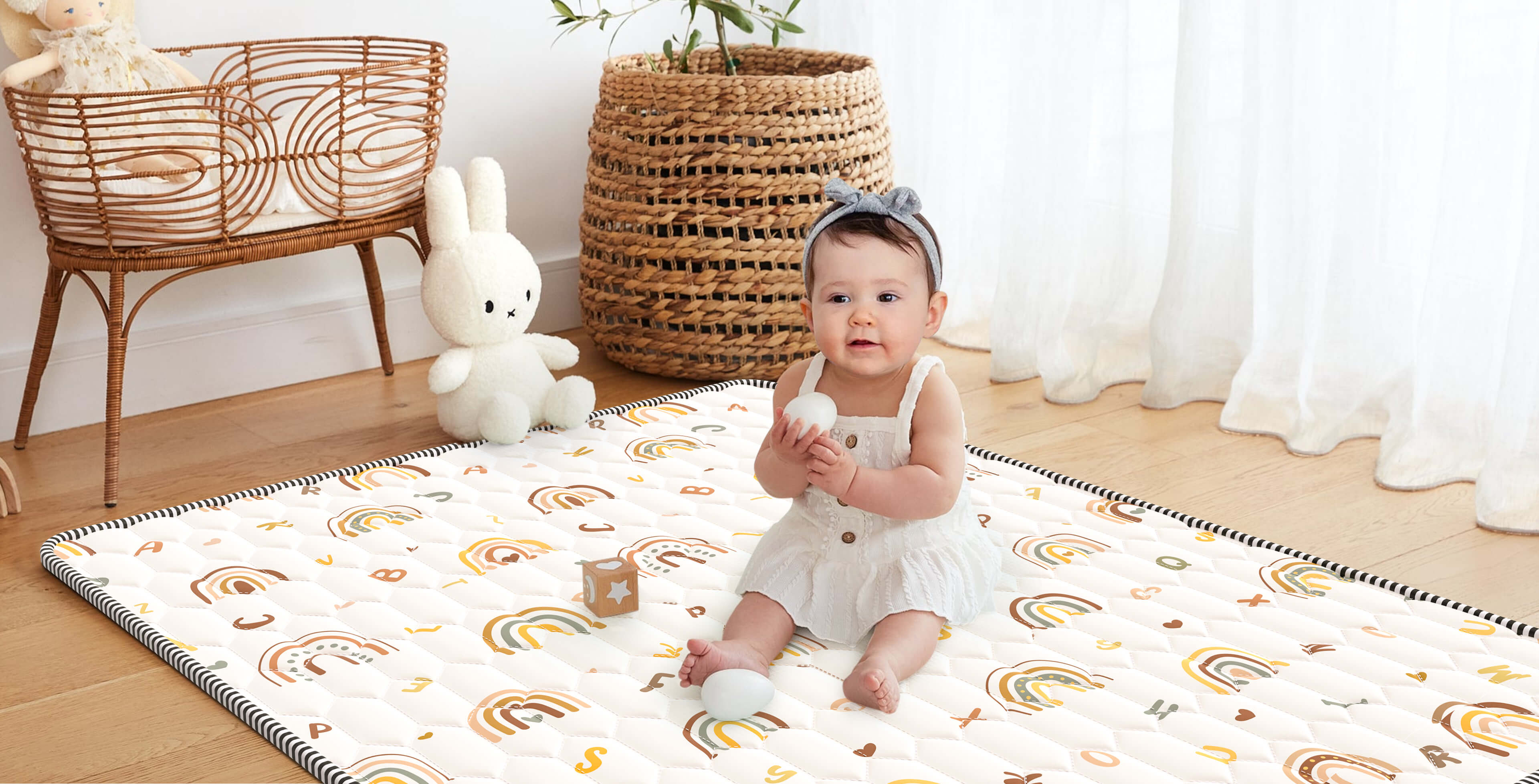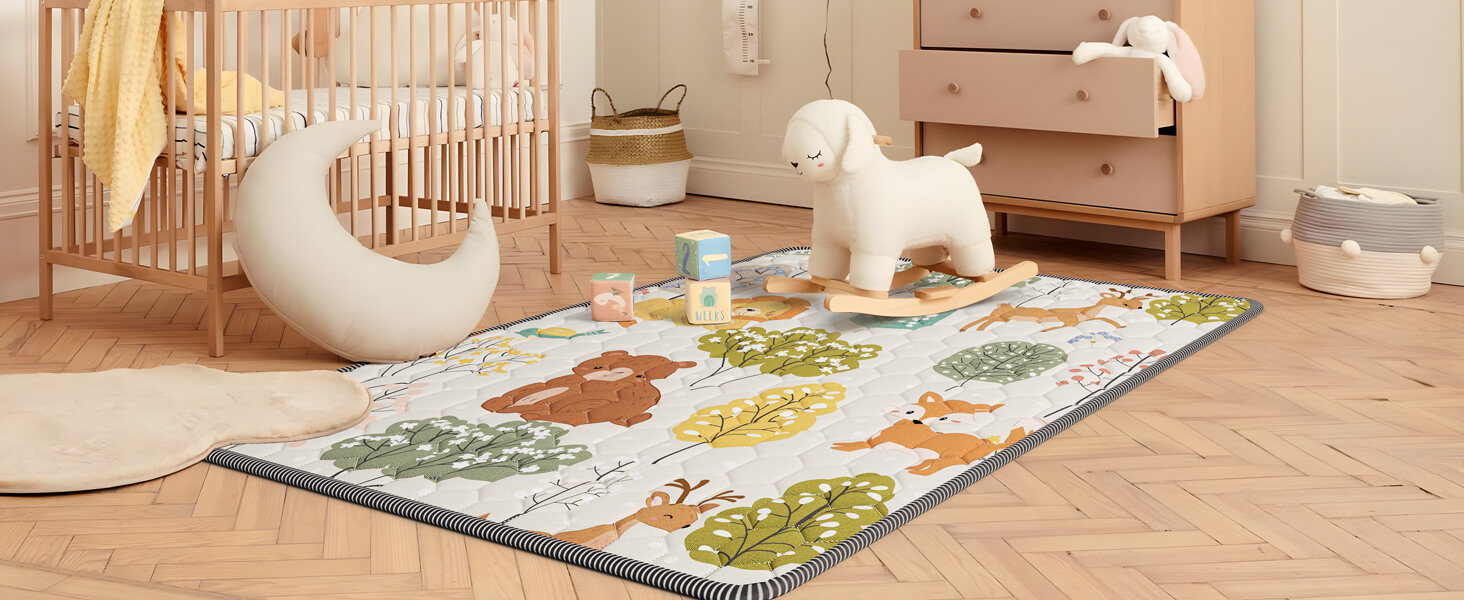
- Home
- Baby Play Mats
- Exploring the Best Designs and Styles of Baby Play Mats
Exploring the Best Designs and Styles of Baby Play Mats
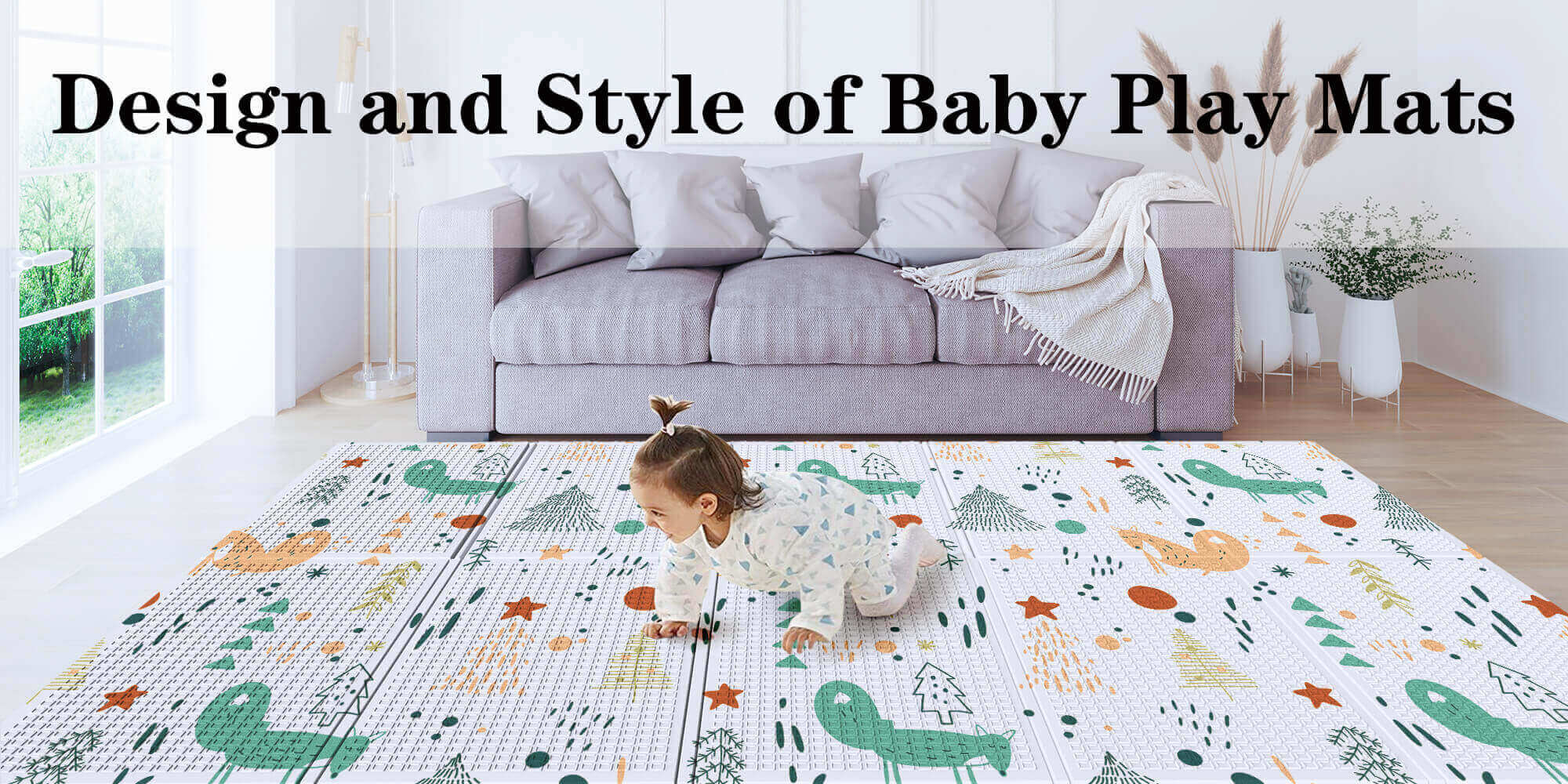
When selecting a baby play mat, it’s important to consider not only its functionality and safety but also its design and style. Play mats are essential for providing babies with a safe, comfortable space to explore their environment, aiding their physical development, and offering an area for parents to interact with them. However, beyond these practical aspects, the aesthetic appeal of play mats can complement home décor, influence mood, and reflect the unique personality of both the child and the parents.
This blog explores the various elements of design and style that are prevalent in modern baby play mats, ensuring that parents can make an informed decision while keeping both functionality and aesthetics in mind.
1. Importance of Design in Baby Play Mats
Baby play mats are no longer just functional pieces of baby equipment. As living spaces have evolved into more curated and visually appealing environments, baby products like play mats have followed suit. This shift reflects a growing trend among parents who want baby items to seamlessly integrate with their home’s aesthetic. But beyond home décor, the design of a baby play mat can also influence a baby’s cognitive and emotional development.
Impact on Baby’s Development
Design elements such as colors, patterns, and textures can have a significant impact on a baby’s sensory development. High-contrast colors, for example, can stimulate an infant’s visual senses and promote early brain development. Bold patterns, contrasting shapes, and varying textures also encourage babies to explore and interact with their surroundings, enhancing their motor skills and cognitive abilities.
Parental Preferences for Home Integration
Parents today seek baby products that complement their home’s interior design. Play mats are often available in a variety of colors and patterns that can blend seamlessly with a living room, nursery, or playroom. Whether minimalist, modern, or traditional, baby play mats now cater to a wide range of design preferences, ensuring that parents don’t have to sacrifice style for functionality.
2. Types of Design in Baby Play Mats
Design and style choices in baby play mats range from minimalist and neutral to colorful and playful. Below are some popular design types that offer parents different options to match their homes and personal preferences:
Minimalist Designs
Minimalist baby play mats have gained popularity, particularly among parents who value simplicity, cleanliness, and a modern aesthetic. These designs often feature neutral color palettes, clean lines, and subtle patterns, making them a favorite for contemporary or Scandinavian-style homes.
Neutral Color Palettes: Minimalist designs typically include soft, muted colors such as beige, gray, light pastels, or white. These neutral tones are soothing, blending seamlessly with a variety of home décors. The understated colors ensure that the mat complements rather than overwhelms the room, providing a calm environment for both the baby and the parents.
Simple Patterns: Minimalist play mats may have subtle geometric shapes like small triangles, dots, or linear designs. Some are completely plain, emphasizing a sleek, clean look that doesn’t detract from the room’s overall design. This type of mat is perfect for parents who prefer a less busy and more tranquil space.
Functionality Meets Style: Despite their pared-down look, minimalist play mats are just as functional as their more colorful counterparts. They provide all the necessary support and safety features while appealing to parents who want baby products that don’t interfere with their home’s modern design aesthetic.
Educational and Interactive Designs

Play mats with educational and interactive elements are ideal for parents who want their baby’s mat to serve as both a comfortable play surface and a learning tool. These mats are often more vibrant and feature elements that help stimulate a baby’s development through visual and tactile interactions.
Alphabet and Numbers: One of the most common educational features is the inclusion of letters and numbers on the mat. Mats with this design help introduce babies and toddlers to early literacy and numeracy concepts. Babies can see, touch, and eventually recognize letters and numbers, making it a fun and interactive learning experience.
Animal and Nature Themes: Play mats featuring animals, plants, and natural landscapes are also popular. These themes help introduce babies to the natural world, sparking curiosity and imagination. Babies love to see colorful representations of animals like elephants, lions, and giraffes, while parents appreciate the exposure to diverse elements of nature.
Interactive Features: Some educational mats take interactivity to the next level by incorporating additional features such as mirrors, crinkle fabrics, or soft toys. These elements encourage babies to explore their surroundings, helping to develop their fine motor skills, hand-eye coordination, and sense of discovery. Certain mats even produce sounds, further engaging the baby’s auditory senses.
Playful and Vibrant Designs
For parents who want to create a stimulating and lively play environment for their baby, playful and vibrant designs are a great choice. These mats are often characterized by their bright colors, bold patterns, and whimsical themes that captivate the baby’s attention.
Bold and Bright Colors: Playful designs frequently use bright primary colors like red, blue, yellow, and green, which are known to attract the attention of babies and toddlers. These colors help create a stimulating visual environment that encourages play and exploration. Such designs are perfect for creating a dynamic and fun atmosphere in the playroom.
Large, Fun Prints: Mats with playful designs often feature large, engaging prints, such as cartoon characters, animals, stars, or abstract shapes. These elements not only entertain babies but also contribute to the mat’s role as a visual and tactile learning tool. For instance, a mat with oversized animal characters can help babies learn to recognize different creatures, while shapes and symbols can aid in early shape recognition.
Whimsical Themes: Whimsical themes, such as magical forests, space adventures, or jungle safaris, turn the play mat into an imaginative world for the child. These mats often have interactive or textured elements that align with the theme, encouraging babies to explore and discover new details within the mat. Themes like these help to inspire creativity and make playtime more engaging.
Geometric and Abstract Designs
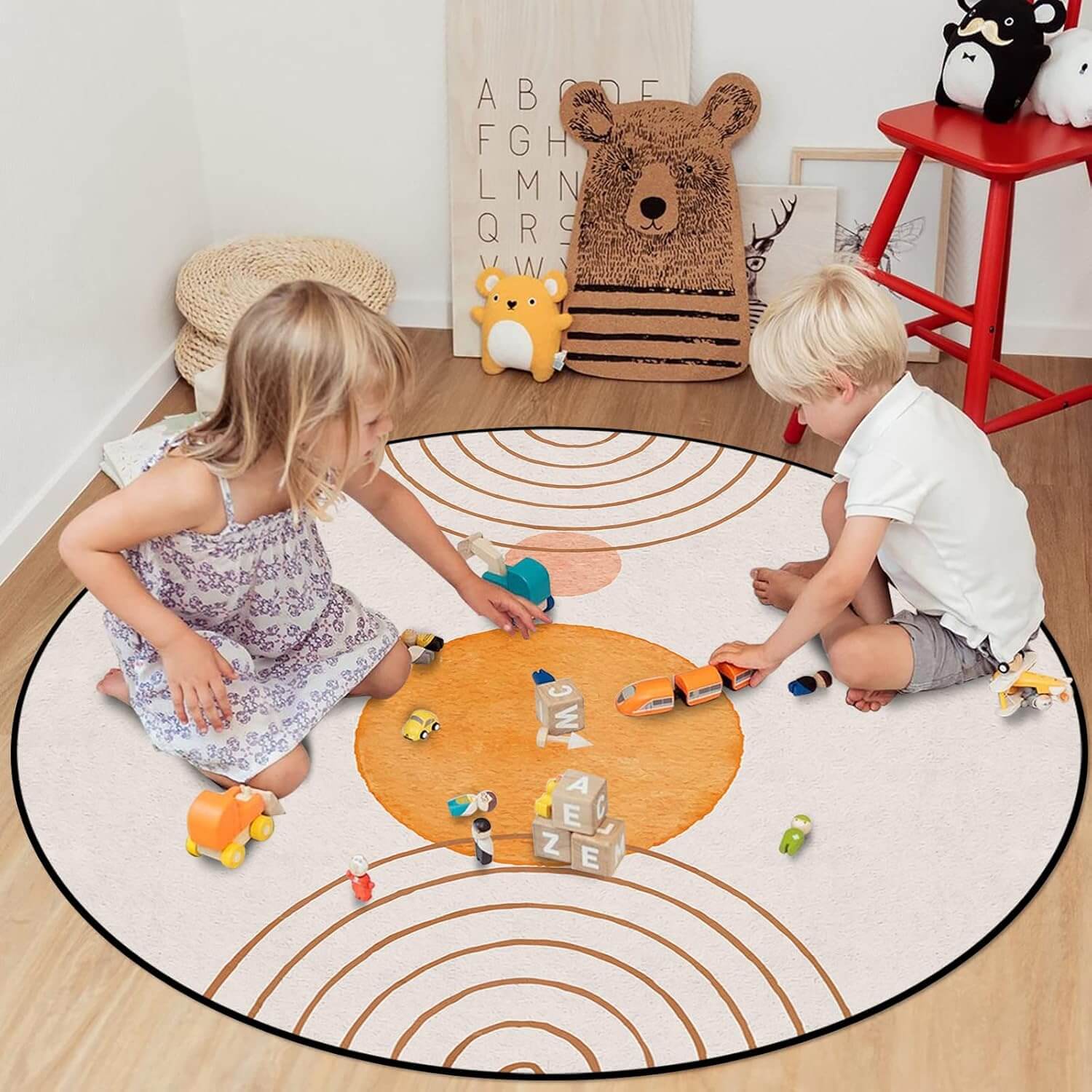
Geometric and abstract designs appeal to parents looking for something modern but still visually stimulating for their baby. These mats offer a middle ground between minimalist and playful designs by incorporating more structured patterns without overwhelming the senses.
Geometric Shapes: These designs often feature recurring shapes like squares, triangles, and circles arranged in a visually pleasing pattern. They provide visual stimulation for the baby while maintaining a balanced and cohesive look. The symmetry and repetition of shapes can also serve as a visual learning tool as babies start recognizing patterns.
Abstract Art-Inspired Prints: Some mats draw inspiration from abstract art, with flowing lines, organic shapes, and a mix of vibrant and neutral colors. These mats tend to appeal to parents who appreciate artistic flair and want their baby’s play space to feel creative and modern.
Color Combinations: Geometric and abstract designs often use a mix of muted and bold colors, creating a visually engaging yet calming environment. For example, a mat might combine soft grays and whites with pops of teal or mustard, offering a sophisticated but playful look.
Cultural and Global-Inspired Designs
Cultural and global-inspired designs introduce elements from different parts of the world into the baby’s play environment. These mats can feature patterns, symbols, or illustrations inspired by traditional textiles, art, or architecture from various cultures.
Bohemian and Tribal Patterns: Boho-chic and tribal patterns are increasingly popular in baby play mat designs. These mats often feature intricate, hand-drawn patterns with earthy colors like burnt orange, terracotta, and deep blues. They provide a rich, textural look that works well in eclectic or globally inspired home interiors.
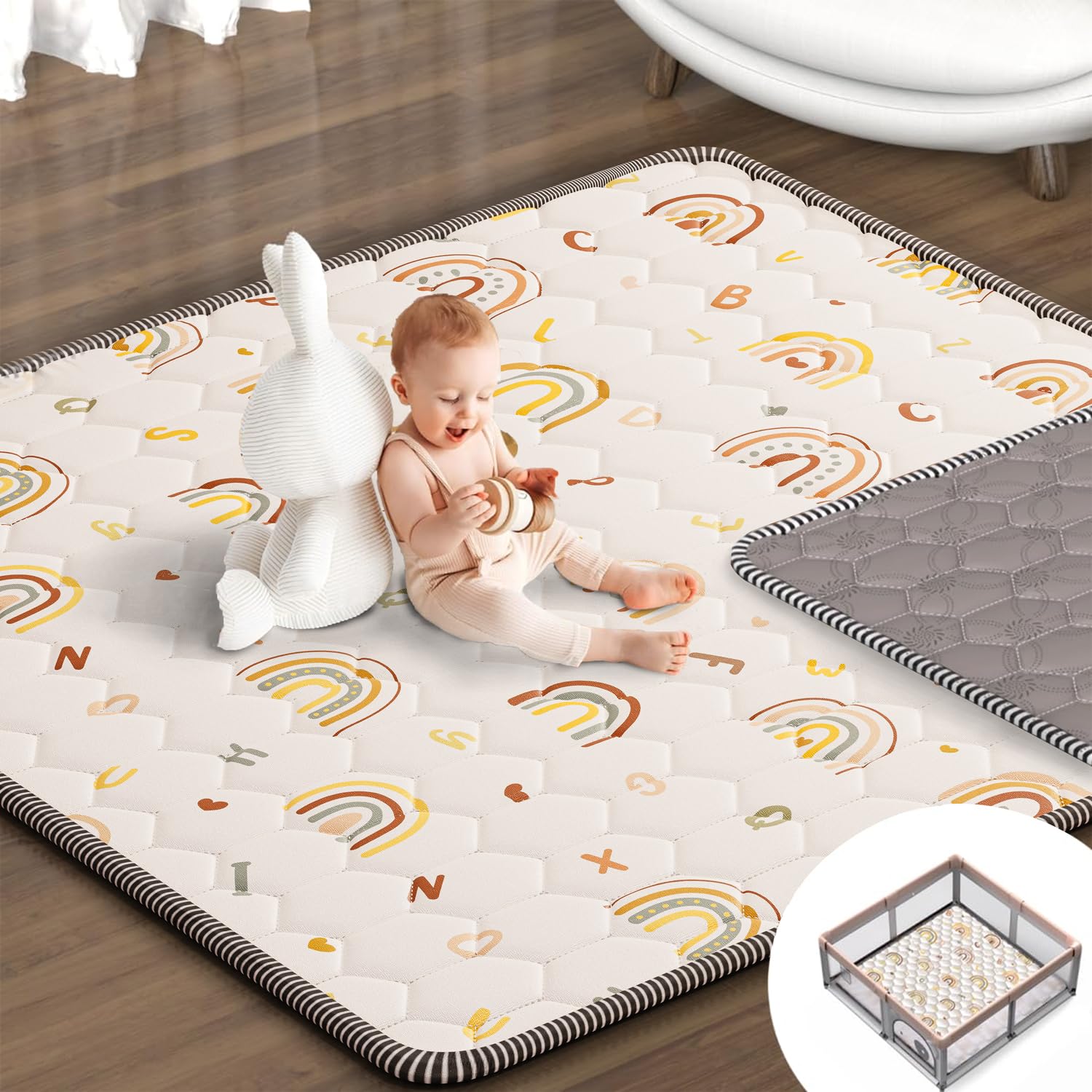
Cultural Symbols and Art: Some play mats incorporate symbols or artwork inspired by cultural traditions from around the world. Whether it’s geometric patterns inspired by Moroccan tiles or floral motifs from East Asian art, these designs introduce babies to the beauty of cultural diversity and history.
3. Materials Used in Baby Play Mats
The material of a baby play mat is a crucial factor in both its design and functionality. Modern baby play mats are made from a variety of materials, each offering different benefits in terms of comfort, safety, and aesthetics.
Foam Play Mats
Foam mats are one of the most popular choices for baby play mats. They are soft, cushioned, and provide excellent support for babies as they learn to crawl, roll, and play.
Benefits: Foam mats are easy to clean, lightweight, and typically offer a lot of padding, making them ideal for hardwood or tiled floors.
Design Options: Foam play mats are often available in bright colors and interlocking puzzle-piece designs, allowing parents to customize the size and layout of the play area.
Fabric Play Mats
Fabric mats offer a softer, cozier surface for babies. These mats are typically padded with cotton or polyester filling, providing a plush and comfortable area for tummy time and play.
Benefits: Fabric mats are usually machine-washable, making them convenient for parents. They are also foldable, which makes them easy to store or transport.
Design Options: Fabric play mats come in a wide variety of patterns and prints, from animal designs to more sophisticated, stylish patterns that can complement the home décor.
Rubber Play Mats
Rubber play mats are another popular option for their durability and non-slip properties. These mats are ideal for active toddlers who need a secure and stable surface to play on.
Benefits: Rubber mats are water-resistant, easy to clean, and often have anti-slip features. They provide a firm yet cushioned surface for safe play.
Design Options: While rubber mats are more functional, they also come in a range of designs, from simple, solid colors to vibrant, patterned options.
4. Safety Considerations in Baby Play Mat Design
When it comes to baby products, safety is a top priority. Baby play mats should meet specific safety standards to ensure that they are suitable for infants and toddlers.
Non-Toxic Materials
Baby play mats should be free from harmful chemicals such as phthalates, BPA, and lead. Parents should look for mats that are made from non-toxic, eco-friendly materials to ensure the safety of their little ones.
Certifications: Certifications like OEKO-TEX, CPSIA, and ASTM indicate that the play mat has been tested for safety and is free from harmful substances.
Softness and Cushioning
The cushioning of a baby play mat is essential for protecting babies from falls and tumbles. A well-padded mat can help prevent injuries as babies learn to crawl, walk, and play.
Non-Slip Backing
A non-slip backing is a crucial feature for ensuring that the mat stays securely in place, even on smooth surfaces like hardwood or tile. This prevents accidents and ensures that the mat provides a stable play area.
Easy-to-Clean Surfaces
Babies are prone to spills, drools, and messes, so it’s important that play mats are easy to clean. Many modern mats feature water-resistant or wipeable surfaces, allowing parents to maintain hygiene with minimal effort.
5. Customizable and Modular Play Mats
Customization is an emerging trend in baby play mats. Some brands offer modular designs that allow parents to create a play area that fits their specific needs and space.
Interlocking Mats
Interlocking puzzle-piece mats give parents the flexibility to expand or reduce the size of the play area. These mats are easy to assemble and can be customized to fit various room layouts.
Expandable Design: Parents can purchase additional pieces to increase the size of the mat as their child grows.
Creative Layouts: Interlocking pieces come in various shapes and colors, allowing parents to create unique and visually appealing designs.
Personalized Play Mats
Some manufacturers offer personalized play mats where parents can choose the colors, patterns, and even add their child’s name or custom artwork. This option is particularly appealing to parents who want a one-of-a-kind design that reflects their family’s personality.
6. Trends in Baby Play Mat Design
The design of baby play mats has evolved significantly in recent years, reflecting broader design trends in home décor and parenting. Here are some of the top trends influencing the baby play mat market today:
Eco-Friendly and Sustainable Designs
As sustainability becomes a priority for many families, eco-friendly play mats made from natural or recycled materials are gaining popularity.
Materials: Natural rubber, organic cotton, and recycled foam are commonly used in eco-friendly play mats.
Aesthetic: These mats often feature earthy tones and nature-inspired designs, making them a beautiful and responsible choice for environmentally conscious families.
Bohemian and Rustic Styles
Bohemian and rustic design styles, which emphasize natural materials, warm colors, and handcrafted elements, have become popular in baby play mats. These mats often feature earthy tones, woven textures, and tribal or geometric patterns that complement boho-inspired nurseries or living spaces.
Scandinavian Influence
Inspired by the minimalist and functional design principles of Scandinavian interiors, some baby play mats feature soft colors, clean lines, and simple patterns. These mats are perfect for parents who prefer a modern, understated look that doesn’t overwhelm the space.
7. Popular Brands Offering Stylish Baby Play Mats
Several brands are known for combining style, functionality, and safety in their baby play mat designs. Below are a few popular brands that offer aesthetically pleasing and practical options for parents:
Skip Hop: Skip Hop is well-known for producing high-quality baby gear with an emphasis on playful and engaging designs. Their play mats often feature interactive elements like mirrors, crinkle fabrics, and toy attachments, making them both functional and fun.
Lollaland: Lollaland offers minimalist, eco-friendly play mats made from high-quality materials. Their designs are simple yet stylish, with muted color palettes that appeal to parents seeking a modern aesthetic.
Tadpoles: Tadpoles is known for its interlocking foam mats, which come in a variety of playful patterns and colors. These mats are affordable and customizable, making them a popular choice for parents who want both style and flexibility.
Gathre: Gathre offers luxury play mats made from vegan leather, blending style with functionality. Their mats are wipeable, water-resistant, and come in a variety of chic designs that complement modern home décor.
ieBabay: ieBabay combines educational designs with features like foldability, anti-slip surfaces, and eco-friendly materials. Their mats are durable, hypoallergenic, and customizable in size to fit any space, perfect for active play.
Conclusion
Baby play mats are more than just a practical item—they are an integral part of a child’s early development and a reflection of parental style. With so many design options available, parents no longer have to compromise between aesthetics and functionality. From minimalist designs that blend seamlessly with modern interiors to bold, interactive mats that stimulate a child’s senses, there is a play mat for every family.
As parents become more discerning about the products they introduce into their homes, the demand for stylish, safe, and functional baby play mats continues to grow. Whether prioritizing eco-friendly materials, customizable designs, or sensory engagement, today’s play mats cater to both babies’ developmental needs and parents’ design preferences.

